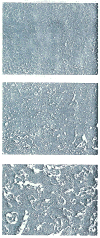Pathologic observations in human allograft recipients treated with FK 506
- PMID: 1689891
- PMCID: PMC2903856
Pathologic observations in human allograft recipients treated with FK 506
Figures






References
-
- Inamura N, Nakahara K, Kino T, et al. Transplantation. 1988;45:206. - PubMed
-
- Ochiai T, Nakajima K, Nagata M, et al. Transplantation. 1987;44:734. - PubMed
-
- Lim SLM, Thiru S, White DJG. Transplant Proc. 1987;19(suppl 6):68. - PubMed
-
- Ochiai T, Nagata M, Nakajima K, et al. Transplantation. 1987;44:729. - PubMed
Publication types
MeSH terms
Substances
Grants and funding
LinkOut - more resources
Full Text Sources
Medical
